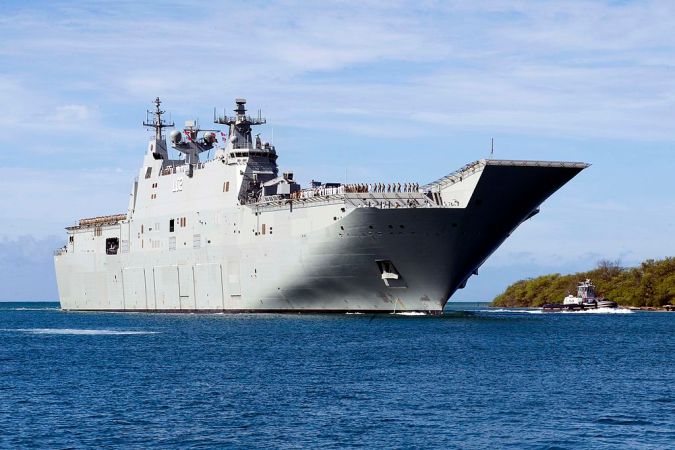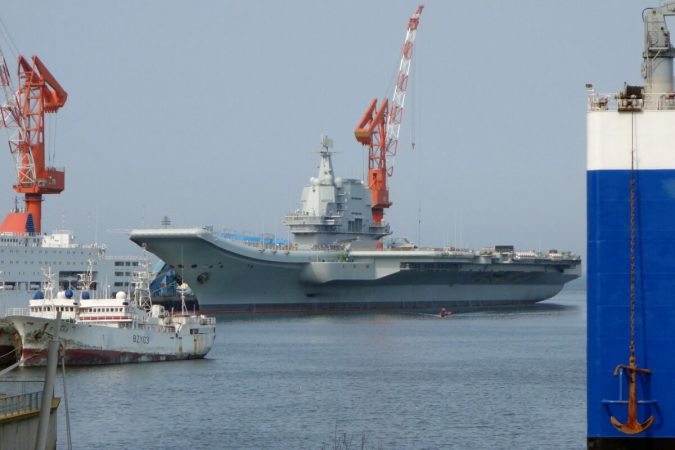Tokyo delivered a humiliating public protest to Beijing for the intrusion of a vast Chinese “fishing fleet” escorted by more than a dozen coast guard and other law-enforcement vessels in or near waters of the disputed Senkaku islands.
Such protests are common in the ongoing cat and mouse game in the East and South China Seas, but they are usually delivered in private. In this case, Tokyo decided to turn its protest into political theater.
China’s Ambassador to Japan, Cheng Yonghua, was summoned to the foreign ministry, where news and television camera were waiting to film the encounter. Foreign Minister Fumio Kishida kept Cheng waiting for ten minutes then entered, a stern look on his face, gesturing Cheng to sit down.
“Relations with China are becoming noticeably wors[e] because China is trying to change the status quo,” Kishida lectured Cheng, who looked embarrassed by the media presence. He said the Diaoyu, as China calls them, were Chinese territory and the two nations should “strive to reach a solution.”

Japan has become used to Chinese Coast Guard intrusions into its claimed territorial waters. On the average of once every two weeks, two or three Chinese ships slip into Senkaku waters. They stay for a couple hours then leave.
But there had been nothing like what happened August 8 when a flotilla of more than 230 “fishing boats” escorted by up to 28 Chinese Coast Guard and other law enforcement vessels virtually surrounded the Senkaku islands for several days.
It was not immediately clear exactly what message the Chinese were trying to convey, although Tokyo has been very vocal in supporting the Philippines in its legal action against China resulting in the July 11 ruling that confirmed all of Manila’s charges.
Was the latest intrusion a dress rehearsal for war?
The various scenarios for war in the East China Sea, and possibly in the South China Sea, usually fall into two main categories. There is the “accidental” fight scenario. A Chinese destroyer’s radar locks onto a Japanese warship. The Japanese captain fires back in self-defense and the incident spirals out of control.
That is one scenario. Another, possibly more realistic, is the “swarm” scenario: Several hundred “fishing boats” sail from ports in Zhejiang province for the Senkaku, where they overwhelm the Japanese Coast Guard by their sheer numbers.
This time, the fishing boats land some 200 or so commandoes disguised as fishermen or “settlers.” The Senkakus are not garrisoned by Japanese troops, so no shots are fired. The Chinese side says it is not using force, merely taking possession of what it claims to be its sovereign territory.
Tokyo feels obliged to respond, although the Chinese landing force is too large to dislodge by ordinary policing methods, such as those that have been used in the past when a handful of activists – Chinese and Japanese – tried to land on the disputed islands and plant their flags.
That would put Japan in the position of being the first party to fire shots, possibly landing elements of the Western Infantry Regiment, which was created and trained specifically to recapture islands. Meanwhile, Tokyo hurriedly consults with Washington seeking assurance that it will honor its commitments to defend Japan.
On more than one occasion, including in remarks from President Barack Obama himself, the United States has stated that the Senkaku come under the provisions of the joint security treaty as they are administered by Japan.
In the most recent incident, the estimated 230 Chinese fishing vessels escorted by Chinese law enforcement vessels made no effort to land anyone, though the Japanese Coast Guard shadowing the vessels kept a sharp eye out for any sign of it.
China boasts the world’s largest fishing fleet, but it is a matter of debate among security analysts as to extent to which China’s fishing fleet constitutes a paramilitary force, or as they sometimes say, a “maritime militia.” Somehow, a swarm of Chinese Fishing boats always seem to materialize on cue in disputes in the East and South China Sea.
The use of fishing boats, not to mention the nominally civilian coast guard, tends to blur the distinctions between what is civilian and what is military. In any conflict, the Japan and the U.S. would have to deal with ostensibly civilian boats that could flood the battlefield turning it into a confusing melee.
“China’s fishing fleet is being encouraged to fish in disputed waters . . . and are being encouraged to do so for geopolitical as well as commercial reasons,” says Alan Duport, a security analyst at the University of New South Wales.
Swarm tactics have been used often in the South China Sea. Hundreds of boats converged in the Gulf of Tonkin in 2014 in the dispute over the oil-drilling rig that the Chinese erected in Vietnam’s Exclusive Economic Zone (EEZ).
Beijing has dispatched swarms of fishing boats to Laconia Shoals off the coast of Sarawak to fish in Malaysia’s EEZ, with escorts of coast guard vessels to protect them should Kuala Lumpur try to arrest them. Similar confrontations have taken place in Indonesia’s South Chia Sea EEZ.
China has been commissioning new coast guard vessels, either converted navy frigates or purpose-built cutters, at an astonishing rate to the extent that it can now deploy ships in various corners of the contested waters simultaneously.
It may be better that principle actors in the unfolding conflict are civilian vessels. But certainly lurking nearby and ready to respond are the warships of the regular Chinese, Japanese, and America navies.










